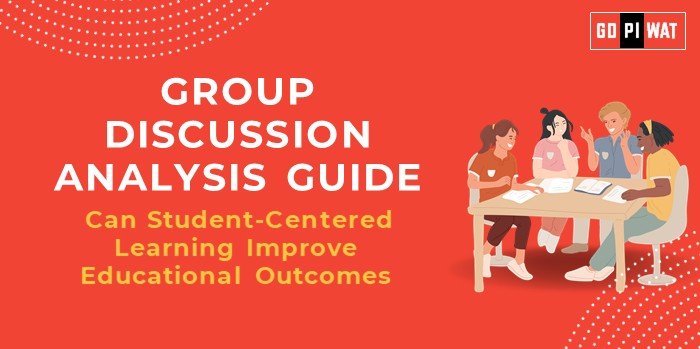📋 GD Guide: Can Student-Centered Learning Improve Educational Outcomes?
🌐 Introduction to Student-Centered Learning
Opening Context: Education is transitioning from teacher-dominated methodologies to student-centered approaches, aiming to cater to diverse learning needs and styles.
Background: Emerging in the late 20th century, this pedagogy emphasizes active learning, personalized strategies, and collaboration. It’s increasingly prioritized in reform agendas globally.
📊 Quick Facts and Key Statistics
– 🎓 Dropout Reduction: Schools with active learning strategies see 10%-12% fewer dropouts annually (UNESCO Report, 2023).
– 💰 EdTech Growth: $400 billion market globally, majorly driven by student-centered learning solutions.
– 🌍 Global Adoption: Finland leads in student-centered learning methodologies, consistently topping global education rankings.
👥 Stakeholders and Their Roles
- 👩🏫 Educators: Facilitate personalized learning experiences.
- 👨🎓 Students: Active participants, shaping their learning journey.
- 👨👩👧👦 Parents: Provide support and feedback.
- 🏛️ Governments: Develop policies and fund programs promoting innovative pedagogies.
- 💻 EdTech Companies: Offer tools to personalize and gamify learning.
🏆 Achievements and Challenges
✨ Achievements:
- ✔️ Improved Engagement: 80% of students report feeling more motivated in student-centered environments (Harvard Ed. Report, 2022).
- ✔️ Lifelong Skills: Enhanced critical thinking and teamwork.
- ✔️ Reduced Inequality: Tailored approaches address diverse learner needs.
⚠️ Challenges:
- 🚧 Resource Intensive: High cost of training and infrastructure.
- 🚧 Teacher Adaptability: Resistance to adopting new methodologies.
- 🚧 Measurement Gaps: Difficulty in assessing non-traditional outcomes.
🌍 Global Comparisons:
- 🇫🇮 Success: Finland’s flexible curricula support active student participation.
- 🇮🇳 Challenges: Developing countries like India face infrastructure barriers.
Case Studies:
– 🇺🇸 USA: Project-Based Learning schools report 20% higher STEM enrollments.
– 🇮🇳 India: Experiential learning pilot in Delhi increased pass rates by 8%.
💡 Structured Arguments for Discussion
✔️ Supporting Stance:
“Student-centered learning fosters creativity and collaboration, preparing students for a dynamic job market.”
❌ Opposing Stance:
“Traditional methods provide better discipline and standardized assessment frameworks.”
⚖️ Balanced Perspective:
“While student-centered learning improves engagement, integrating traditional methods ensures comprehensive skill development.”
🧠 Effective Discussion Approaches
📝 Opening Approaches:
- 📊 Use statistics: “Student-centered learning improves math outcomes by 18% globally.”
- ❓ Pose a question: “Can traditional systems evolve without losing their rigor?”
- 📚 Highlight a case: “Finland’s education success is attributed to its student-first policies.”
🛠️ Counter-Argument Handling:
- “While traditional methods excel in assessments, they fail in fostering soft skills critical in today’s job market.”
🔍 Strategic Analysis of Strengths and Weaknesses
💪 Strengths:
- ✔️ Enhances motivation.
- ✔️ Nurtures creativity.
- ✔️ Develops holistic skills.
❌ Weaknesses:
- 🚧 Resource and teacher dependency.
- 🚧 Measurement difficulties.
🌟 Opportunities:
- 📈 EdTech tools.
- 📈 Global collaboration.
- 📈 Government incentives.
⚡ Threats:
- ❓ Uneven adoption.
- ❓ Technological gaps.
- ❓ Cultural resistance.
📈 Connecting with B-School Applications
Real-World Applications: Strategies for implementing student-centered learning in business leadership programs.
Sample Questions:
- 💬 “How can student-centered learning improve employability?”
- 💬 “Compare student-centered and traditional methods for workforce readiness.”


